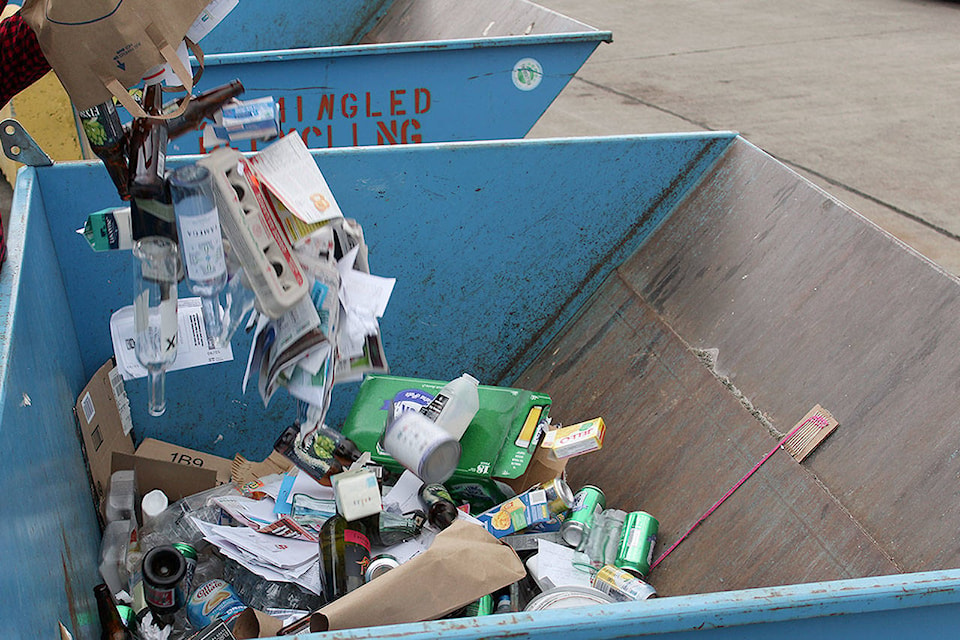Residents, visitors and business owners are going to have to do a better job sifting through their recycling and garbage or else the fees to dump their trash at the local transfer station could rise.
According to a February 2019 audit of items dumped at the site, from the Regional District of Kootenay Boundary (RDKB), 21 per cent of all materials dumped as recycling (cardboard, mixed paper, PCF plastics, glass, tin and plastic film) was in fact garbage. Between 2013 and 2018, the percentage of garbage dumped as recycling at the Big White Transfer Station hovered between 15 and 17 per cent.
A May 2020 staff report called the increase a “significant issue,” noting that if contamination rates stay above 20 per cent, the recycling contractor could refuse loads and send them to the landfill instead, or hike processing fees as a result.
“Everyone is wanting to do their part and do the best job as they possibly can, but this is more an education piece than anything else,” said Diane Langman, board chair for the RDKB. The Big White Transfer Station does not have paid attendants, so residents and businesses are left to follow signs on their own.
“This operational model creates challenges with inappropriately dumped materials as well as maintaining a clean and tidy facility that meets the expectations of local area residents,” reads the May staff report.
Langman and Janine Dougall, RDKB general manager of environmental services, both suggested that Big White’s high turnover of residents and visitors may also play a role in the what gets tossed where. Multi-family buildings with more than 10 units – many of which are rented to tourists throughout the year – are required to have their own bins for recycling and garbage, which then get hauled away. Because people may not be familiar with the specific recycling rules at Big White, items may get mixed up along the way.
Dougall said there may also be a solution if the province were to expand its Recycle BC program. Currently, the “Blue bin program” covers the recycling for residential packaging and paper in many municipalities, including the RDKB. The program does not yet cover the industrial, commercial and institutional )ICI sector – which accounts for many recyclers at Big White. Private recycling contractors used by ICI clients, Dougall said, collect items that they can sell on global markets. But, by bringing the ICI sector into the program, Dougall suggested, the province would simplify the exceptions to recycling rules between business and residential.
In the meantime, the RDKB will roll out a public education campaign for Big White and will seek input from building managers and business owners to learn what some of the barriers are to creating a more efficient recycling system for the area.
